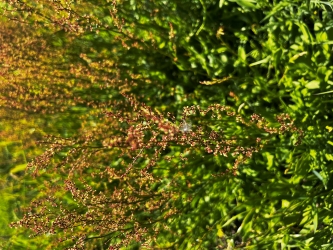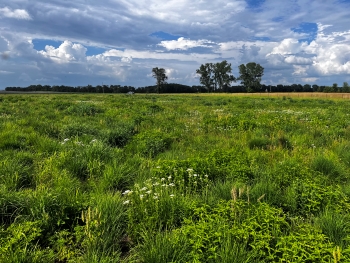
Land stewardship is the process of caring for an ecological landscape in a non-static setting. You analyze the past, present, and future of the ecosystem, with the goal of restoring or maintaining a natural state of being. Looking at all of the variables that could and will affect the habitat and its residents, aiming to mitigate them towards a homeostasis. This week, we looked at ways in which The Nature Conservancy achieves land stewardship in an equitable and sustainable manner. This type of work aligns with my path at Cornell through giving me hands-on work with what I am learning in class, giving me a deeper connection with the work I am doing with professors on research, and mentoring.
There are many ways in which The Nature Conservancy (TNC) achieves their land stewardship goals, many of which involve inter-agency cooperation. For example, this week, we toured and met with DNR staff of Port Louisa, IA. They talked us through their processes, goals, and plans they have in land management and conservation. Furthermore, we explored career paths for the long term and other internships in the shorter term. Another example of inter-agency cooperation is prescription fire. Due to the demand of resources and personnel, prescription fires often include volunteers and staff from other agencies such as the DNR and Fish and Wildlife among others.
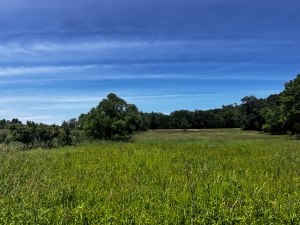
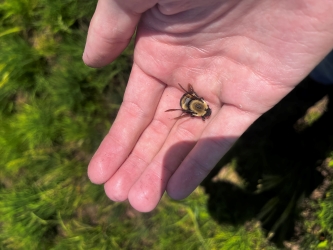
Another way TNC achieves its goals is through citizen and community cooperation. A prime example of this is work with researchers from colleges and universities, as well as their surrounding community members. This week we met with three entomologists who conduct population surveys. We talked and walked through their processes, the reasons that they conduct their research, as well as the use of their findings. We eventually went out to a part of the Swamp White Oak Preserve, and went looking for insects and their host plants, teaching us about the inter-specific connection between them.
The project area of The Land of the Swamp White Oak encompasses sand prairie, swamp, oak savannah, and woodland. These ecotypes enclose many endangered or rare species which depend on the habitat to survive. These species often indicate the land they inhabit as ecologically important, leading to the land being deemed as critical habitat and its protection. This is a large driving factor in land conservation and management: maintaining the land in a state suitable for the organism which occupies the area. These habitats also evolved in a largely un management environment, meaning human activity didn’t impact the habitats in ways it does now. An example of this is prairies, including sand prairies. Grassland prairies evolved with grazing and fire pressures. However, now, with the expansion of human activity and development both of those are no longer available in the forms of wildfire and the grazing of bison herds. Instead, through the land management techniques of organizations like TNC, including prescribed fires and cattle grazing (to emulate bison herds) habitats like sand prairies can exist in a manner they evolved to exist in.
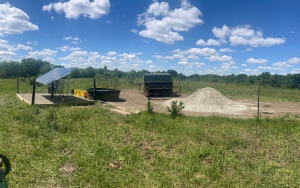
 The Use of Cattle Grazing in the Preserves
The Use of Cattle Grazing in the PreservesDuring the week, we help set up a virtual fence radio tower for the cattle herds used throughout the property. The fence is used similarly as an invisible dog fence but for cows. This project is being done in partnership with a local farmer, a stakeholder in the TNC project area. The farmer leases out the land for their cattle to graze on, and TNC gains the ability to manage their land in a manner that replicates the once natural process found on the land. This helps keep invasive species under control, as well as allowing native species to grow within a system they evolved under. Assisting with the physical setup of the project, directed by one of my supervisors for the internship, helped me understand the relationships necessary to land stewardship, as well as successful conservation work.

